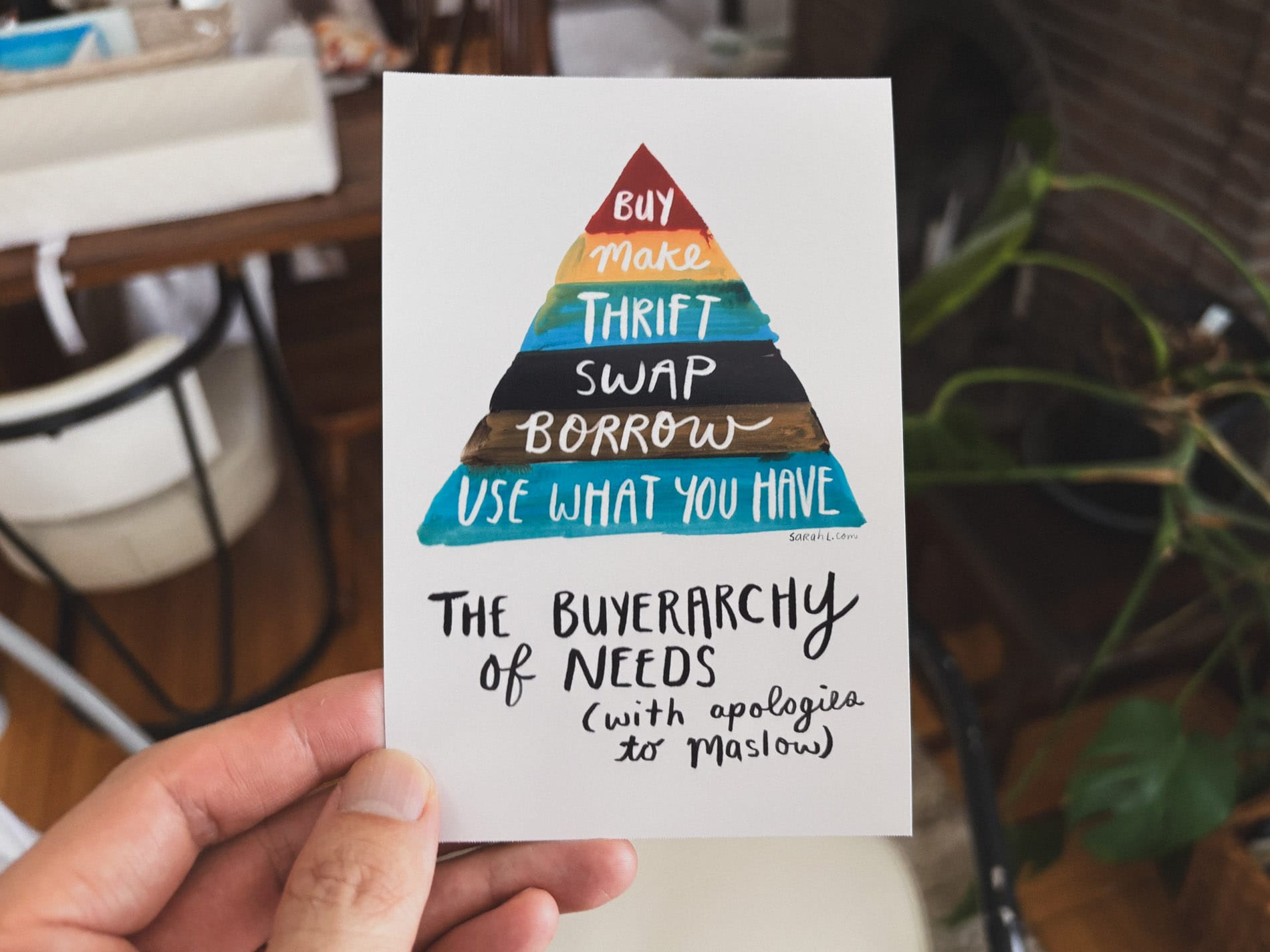I didn’t learn it this way, and friends I’ve talked to say they didn’t either. When as schoolkids we were taught the three R’s of Reduce/Reuse/Recycle, we were not taught that they’re an order of operations. A flow chart. You first look to reduce, to not need the thing at all. Only when forgoing is out of the question do you look to borrow, barter, repurpose, or buy secondhand. And only once that’s exhausted do you pick up something new-but-recyclable.
Very much in this spirit is Sarah Lazarovic’s “Buyerarchy of Needs”:
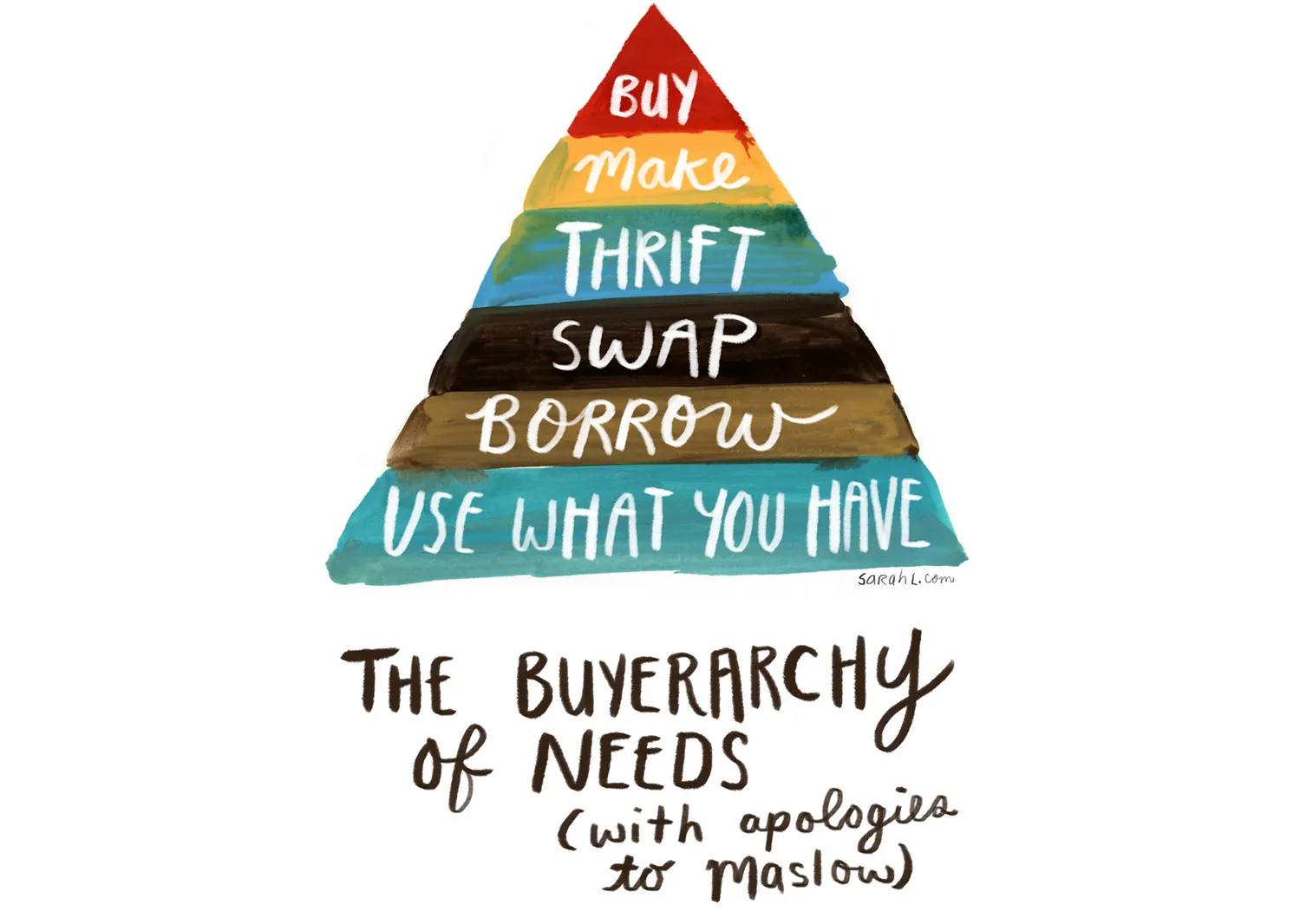
The pyramid has been on my mind often in this “fourth” trimester. We stopped paying for an annual Amazon Prime membership years ago, but I fell prey to a targeted offer for a three-month retrial. A lot of our baby items were donated by friends or scooped up from our local Buy Nothing group. For our registry we asked for gently used when we possible. But when it’s 3am and there’s an inconsolable newborn screaming in your ear, the temptation of a Redditor-approved “miracle swaddle” promising immediate calm and unparalleled soothe, delivered that same afternoon, is all too great.
I’m conflicted. Convenience has become organized around the top of the pyramid. In most cases the easiest, quickest thing to do is to buy new. The lower tiers require the privilege of time; even deciding you don’t need something requires you to be able to pause long enough to consider the alternative. I get it. I also wish it wasn’t this way.
Last letter I promised some infant-agnostic favorites, and I share them with the same contradictory feelings. While I could probably do without these things, I also find joy in them, and I appreciate the care and attention that went into designing, testing, and making them. I’ll happily gush if you let me! And at the same time, I’ll keep looking for ways to degrease that consumptive flywheel.
A subtle knife.
With all the late-night panic buying and gifts from friends and relatives afar, we’ve been opening an inordinate amount of boxes. Enter the Canary, aka the internet’s favorite box cutter. Its stainless steel blade has kid-safe serrations and a nonstick coating. The knife works, I’m guessing, by the same principles that govern the slicing of bread (for isn’t corrugated cardboard the most bread-like non-bread material?) Instead of compressing the paper (or tape) fibers the way a standard utility razor might, it saws through them. I forget where I first came across the Canary, but the most recent mention I logged was in Spencer Wright’s Scope of Work newsletter. I wish I’d known about it when I did my architecture class. It would’ve saved a lot of headaches (and razor blades) during mockups.
A portable nostalgia machine.
As a teenager I nerded out about video game console emulation, namely trying to get SNES games to run on my desktop PC. Only a small fraction of games worked, or you had to find the right shader for a particular one to work. It was a whole ordeal (which also made it super exciting when things actually did play smoothly). Fast-forward twenty years and both software – but more importantly hardware – have come a ways. My entry point was the Miyoo Mini Plus:
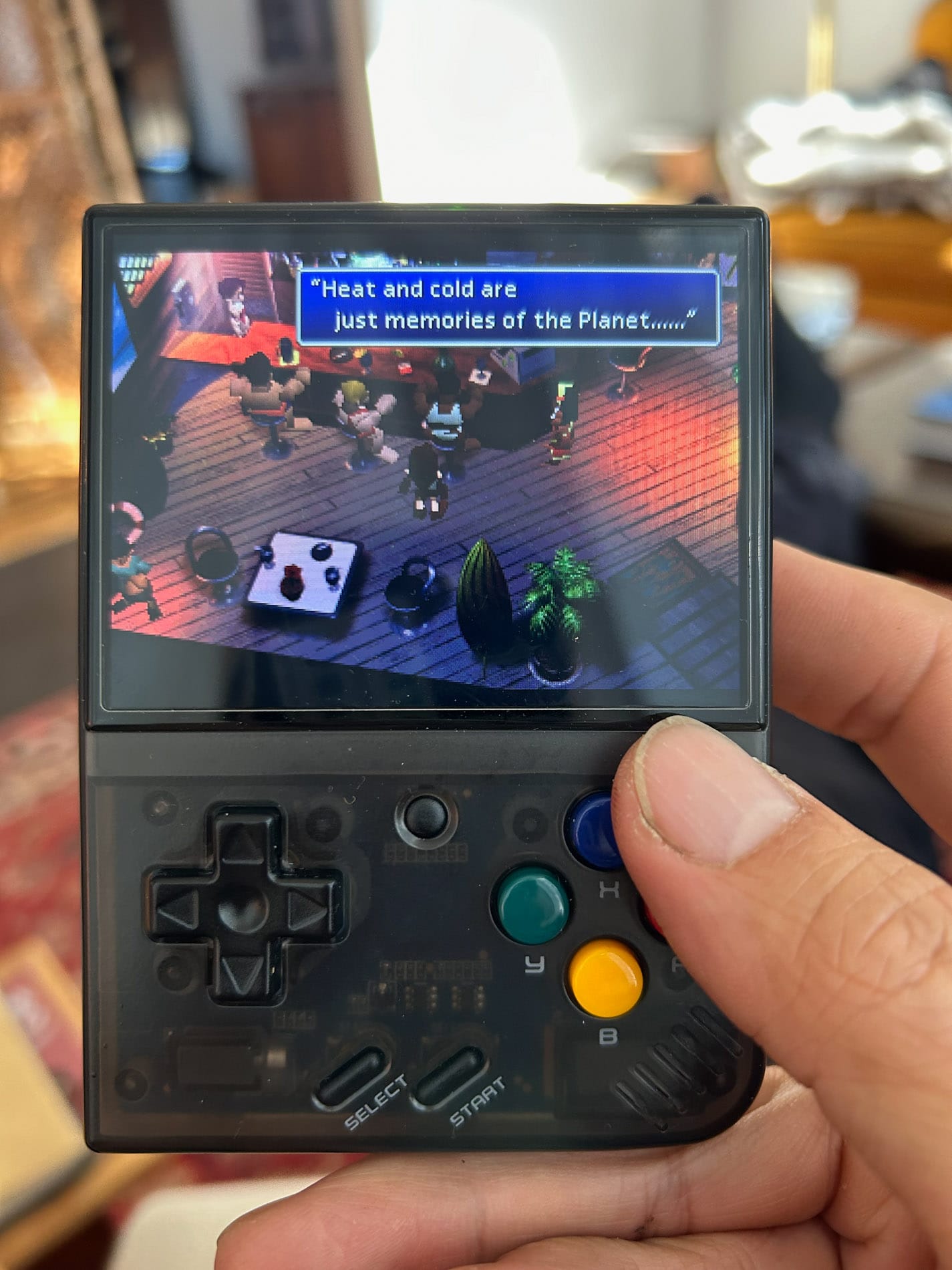
It’s lightweight, operable with one hand, great for times when there’s a sleeping newborn in my lap. When I first got it last year, I was replaying old JRPGs, but after the baby was born I set it up for point-and-click PC adventure games like the Monkey Island series (which I’d missed back in the day). You can play these games on your phone using the same emulation software, but I like having the dedicated device.
If your interest is piqued, be warned: this rabbit hole goes deep.
You might also enjoy, like I did, this cozy YouTube documentary on the making of The Secret of Monkey Island. I especially dug the part about how these games came to look the way that they do (two words: EGA dithering).
A coffee you can drink twice as much of.
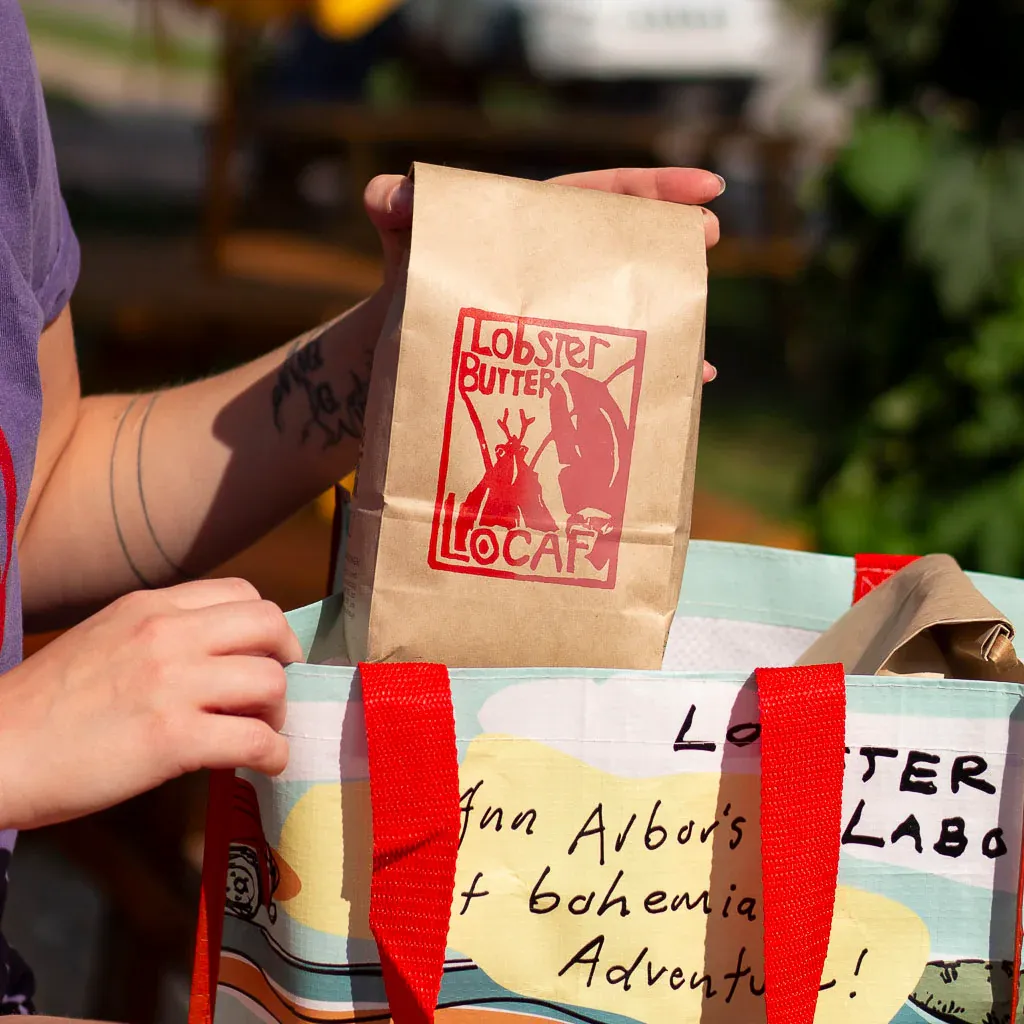
This started during pregnancy, when Julia was supposed to be limiting her coffee intake (and also my year-round, non-pregnant, sensitivity to caffeine). Our solution: half-caf, for the psychological boost from the extra cups. In a pinch I’ll grind our usual supermarket beans (I can feel some of you cringing) and add a couple scoops of decaf. But our favorite premade blend is Ann Arbor roaster Roos Roast’s Lobster Butter LoCAF.
They ship five-pound bags … just sayin’.
A photo printer you might actually use.
The Canon Selphy CP1500, as recommended by Chris Glass (who’s personal website is my favorite on all the internet). You can plug in an SD card or connect a phone or tablet via wifi. It yields borderless 4x6” dye-sublimated prints that are, as Chris says, near-drugstore quality.
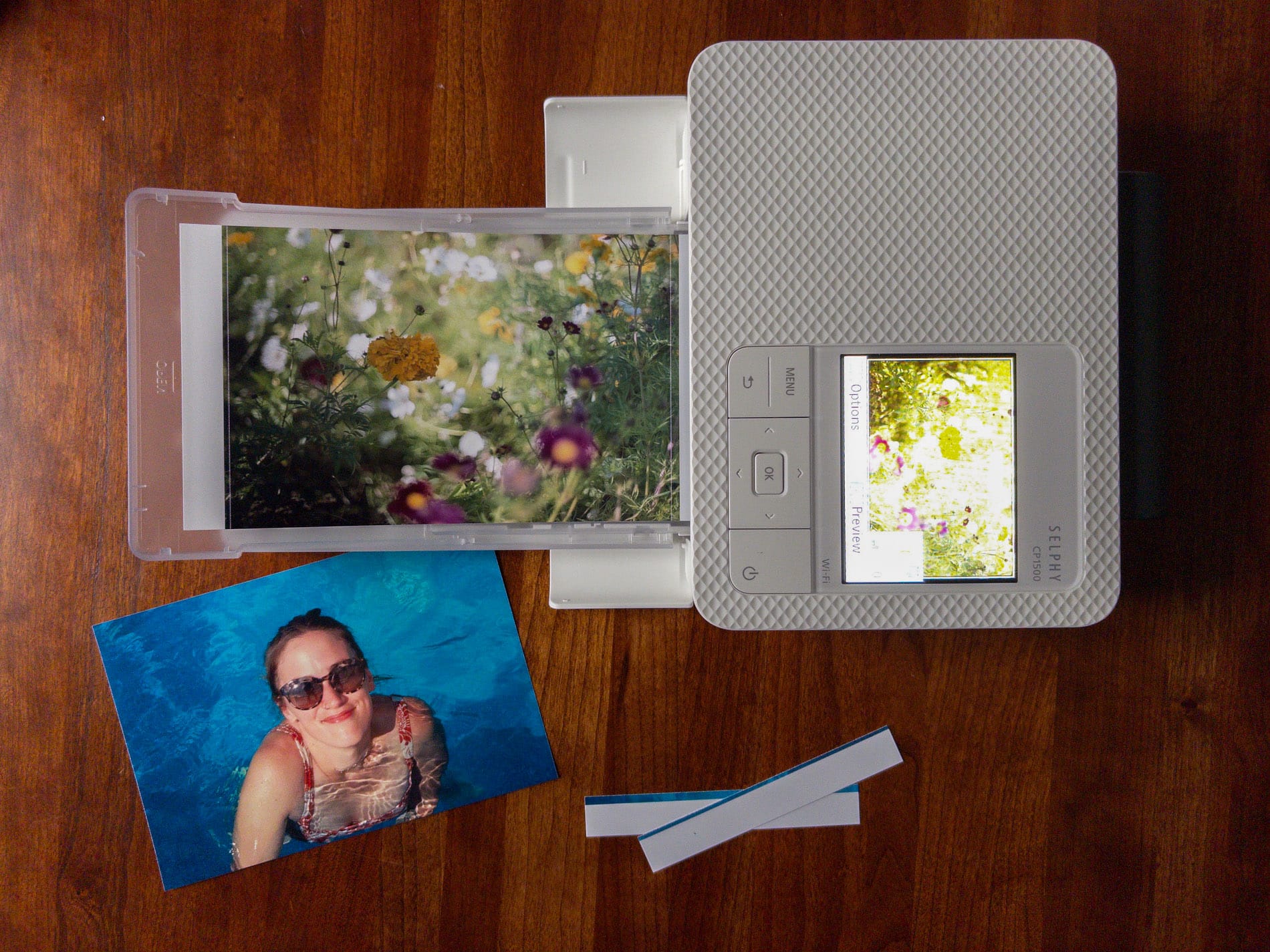
Nieces visiting from Texas and Northern Michigan had fun picking photos of their new cousin and watching the ink layer on one color at a time. When my dad was in town from China in August I was able to send him home with a few photos of him and Rufus, taken the same day.
One note: Don’t skimp on the supplies. I got our CP1500 on Marketplace and it came with a pack of off-brand ink/paper that resulted in a faint white line across every print. Go with the genuine Canon stuff. (There is, however, a third-party battery that makes the unit portable, and it’s worked well so far for me.)
While we’re here, check out how Chris has been processing his twenty-year archive of near-daily photographs. I always delight in seeing one of Chris’s photos, taken the same day of a past year, come across my Threads feed.
A winning powerball.
The first week we were back from the hospital, an absolute champion of a friend brought over, for our bedroom, an old mini-fridge pre-stocked with drinks and snacks. The first to disappear was the freezer bag of homemade no-bake energy bites. Did the friend call them powerballs or did we? Anyway, they’re powerballs now. We’ve made two more batches since.
Putting this newsletter together I realized I could print out Sarah Lazarovic’s Buyerarchy pyramid on the Canon printer, because she’s made the high-res file free to download. It would have been so easy for Lazarovic to “monetize” such a print, but it would also have gone against the whole idea of the pyramid. I admire the principle of the act. So here you go. This is going up on a door frame.
